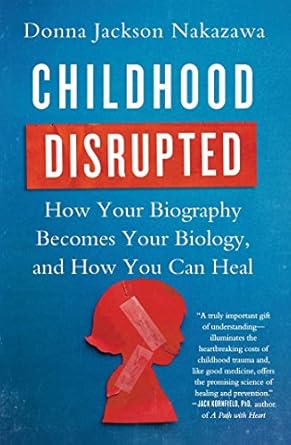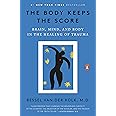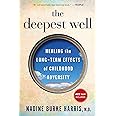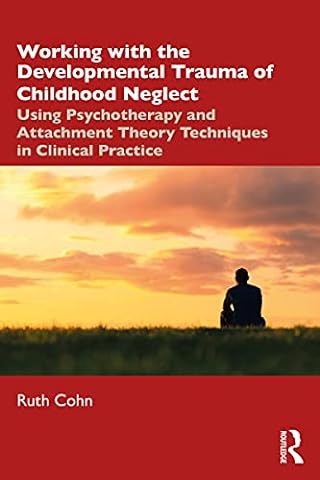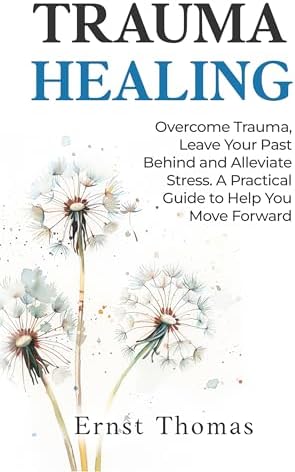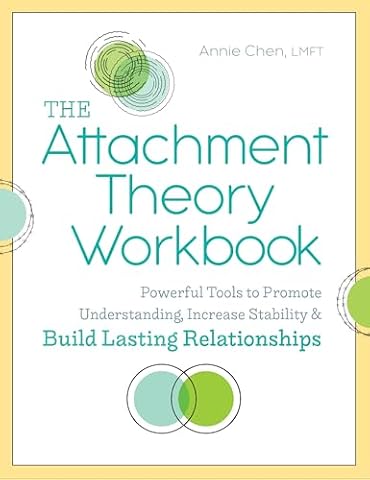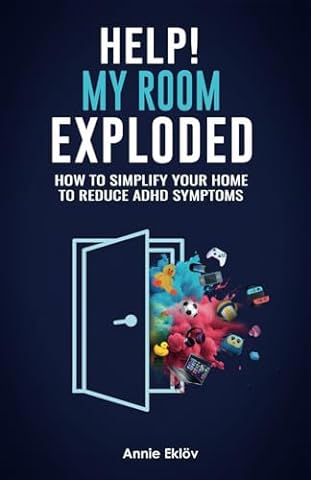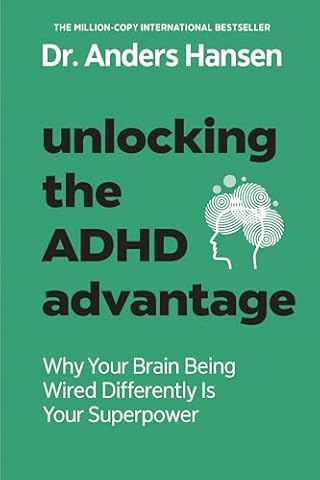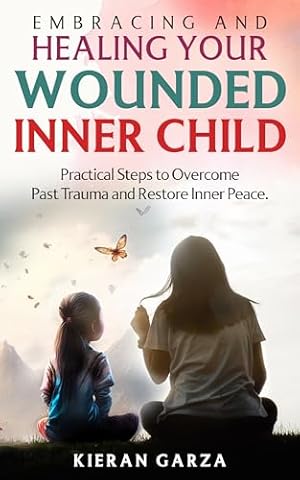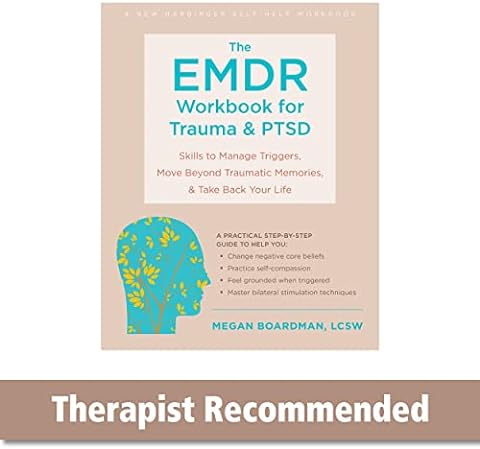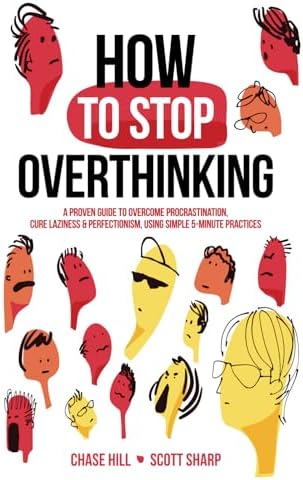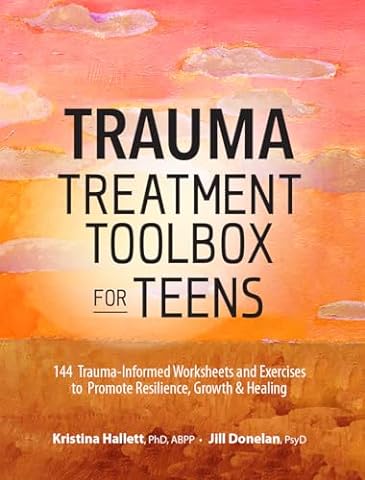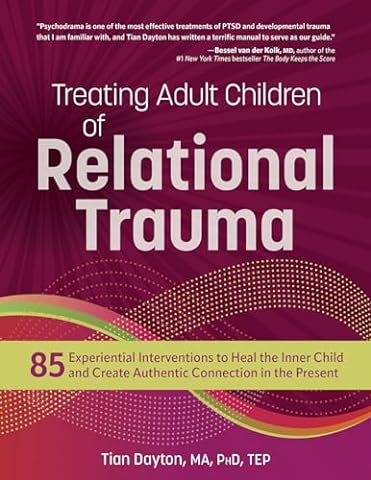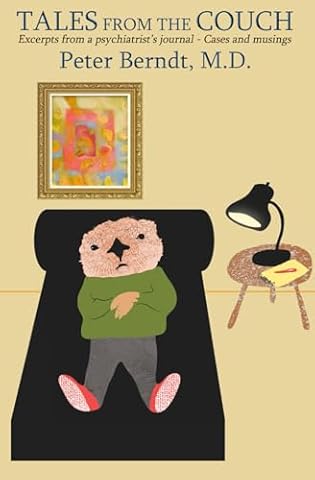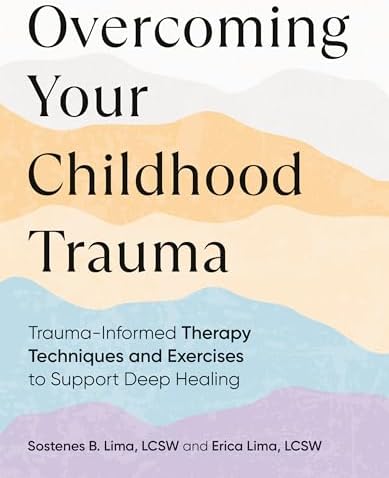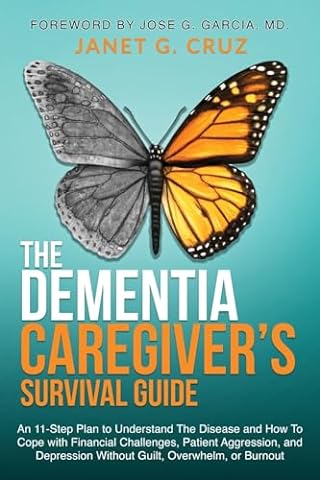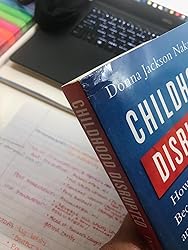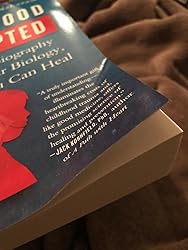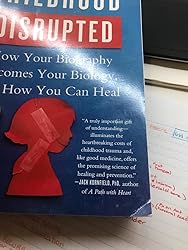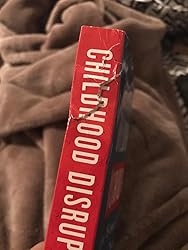
Enjoy fast, free delivery, exclusive deals, and award-winning movies & TV shows with Prime
Try Prime
and start saving today with fast, free delivery
Amazon Prime includes:
Fast, FREE Delivery is available to Prime members. To join, select "Try Amazon Prime and start saving today with Fast, FREE Delivery" below the Add to Cart button.
Amazon Prime members enjoy:- Cardmembers earn 5% Back at Amazon.com with a Prime Credit Card.
- Unlimited Free Two-Day Delivery
- Streaming of thousands of movies and TV shows with limited ads on Prime Video.
- A Kindle book to borrow for free each month - with no due dates
- Listen to over 2 million songs and hundreds of playlists
- Unlimited photo storage with anywhere access
Important: Your credit card will NOT be charged when you start your free trial or if you cancel during the trial period. If you're happy with Amazon Prime, do nothing. At the end of the free trial, your membership will automatically upgrade to a monthly membership.
Buy new:
-37% $10.69$10.69
Ships from: Amazon.com Sold by: Amazon.com
Save with Used - Acceptable
$7.11$7.11
Ships from: Amazon Sold by: Goodwill Good Skills
Learn more
0.79 mi | San Francisco 94103
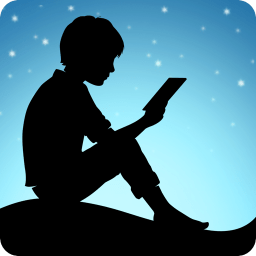
Download the free Kindle app and start reading Kindle books instantly on your smartphone, tablet, or computer - no Kindle device required.
Read instantly on your browser with Kindle for Web.
Using your mobile phone camera - scan the code below and download the Kindle app.



 Audible sample Sample
Audible sample Sample Follow the author
OK
Childhood Disrupted: How Your Biography Becomes Your Biology, and How You Can Heal Paperback – July 26, 2016
Purchase options and add-ons
Your biography becomes your biology. The emotional trauma we suffer as children not only shapes our emotional lives as adults, but it also affects our physical health, longevity, and overall well-being. Scientists now know on a bio-chemical level exactly how parents’ chronic fights, divorce, death in the family, being bullied or hazed, and growing up with a hypercritical, alcoholic, or mentally ill parent can leave permanent, physical “fingerprints” on our brains.
When children encounter sudden or chronic adversity, stress hormones cause powerful changes in the body, altering the body’s chemistry. The developing immune system and brain react to this chemical barrage by permanently resetting children’s stress response to “high,” which in turn can have a devastating impact on their mental and physical health as they grow up.
Donna Jackson Nakazawa shares stories from people who have recognized and overcome their adverse experiences, shows why some children are more immune to stress than others, and explains why women are at particular risk. “Groundbreaking” (Tara Brach, PhD, author of Radical Acceptance) in its research, inspiring in its clarity, Childhood Disrupted explains how you can reset your biology—and help your loved ones find ways to heal. “A truly important gift of understanding—illuminates the heartbreaking costs of childhood trauma and like good medicine offers the promising science of healing and prevention” (Jack Kornfield, author of A Path With Heart).
- Print length304 pages
- LanguageEnglish
- Publication dateJuly 26, 2016
- Dimensions5.5 x 0.7 x 8.38 inches
- ISBN-101476748365
- ISBN-13978-1476748368
The Amazon Book Review
Book recommendations, author interviews, editors' picks, and more. Read it now.

Explore your book, then jump right back to where you left off with Page Flip.
View high quality images that let you zoom in to take a closer look.
Enjoy features only possible in digital – start reading right away, carry your library with you, adjust the font, create shareable notes and highlights, and more.
Discover additional details about the events, people, and places in your book, with Wikipedia integration.
Frequently bought together
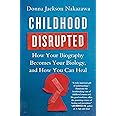
Products related to this item
Editorial Reviews
Review
"This groundbreaking book connects the dots between early life trauma and the physical and mental suffering so many live with as adults. Author Donna Jackson Nakazawa fully engages us with fascinating, clearly written science and moving stories from her own and others' struggles with life-changing illness. Childhood Disrupted offers a blend of fresh insight into the impact of trauma and invaluable guidance in turning toward healing!" -- Tara Brach, Ph.D. Author of Radical Acceptance and True Refuge
"Long overdue . . . Childhood Disrupted is a courageous,compassionate and rigorous every-persons guide through the common roots and enduring impact of childhood trauma in each of our lives. Linking breakthrough science with our everyday lived experience, Childhood Disrupted inescapably and artfully leads the reader to take practical steps and grasp the urgency of coming to terms with and taking a stand to heal the legacy of trauma in our personal and collective lives. This book reframes the common experience of childhood trauma through a lens of possibility for a life and society with an inexhaustible commitment to the safe, stable and nurturing relationships our health and healing require." -- Christina Bethell, PhD, MBH, MPH Professor of Child Health, Johns Hopkins Bloomberg School of Public Health
"Donna Jackson Nakazawa’s Childhood Disrupted masterfully captures the complexity of how early life adversity imprints on our biology and stalks our health into adulthood. Heart rending stories of hardship and triumph laced with medical facts and findings creates a framework of practical advice for remaining unbroken in a challenging world." -- Margaret M McCarthy, PhD, Professor and Chair, Dept. of Pharmacology, University of Maryland School of Medicine
“Donna has once again taken a difficult medical topic and made it not only easy to understand, but a great read. Eye-opening and inspiring, Childhood Disrupted provides a paradigm-shifting road map for understanding how early stress is linked to later illness, and offers a must-read vision for how to begin healing at any age. This book will help readers and especially women better understand the biology of stress, and jump start important new conversations about our health and well-being!" -- DeLisa Fairweather, PhD, Director of Cardiovascular Translational Research, Mayo Clinic
“Childhood Disrupted helps shift the paradigm in our understanding of health and well-being by unveiling the role that early adversity plays in our physical and emotional adult health. Donna offers a missing piece of the puzzle as to why women suffer in disproportionate numbers from chronic physical and mental health conditions, and opens a new and much-needed door for healing.” -- Amy Myers MD author, New York Times Best Seller - The Autoimmune Solution
"Childhood Disrupted is a timely book that summarizes the effects of childhood adversity, incorporating the current science in a very personalized and approachable way. The more we understand about childhood adversity and its imprint on our body and brain, the more we can help each other recover from its harmful effects. This is an important read for anyone looking to help those afflicted by childhood adversity, whether personally or in a caring role such as parents, teachers, and health care workers." -- Ryan Herringa, M.D., Ph.D., Assistant Professor of Child & Adolescent Psychiatry, University of Wisconsin School of Medicine & Public Health
"Every few years a book comes along that changes the way we view ourselves, our society, and our place in the world. This is such a book. Compulsively readable and deeply moving, Childhood Disrupted contains surprising insights into the power of childhood experience on every page." -- Shannon Brownlee, MS, author of Overtreated: Why Too Much Medicine is Making Us Sicker and Poorer and senior vice president of the Lown Institute
"In this stimulating book that eloquently describes the effects of one's biography on mind, brain, and body, Nakazawa guides us through a step by step path to recovery. This work represents an invaluable source of hope and inspiration for anyone who is suffering from the aftermath of early adverse experience." -- Ruth A Lanius, MD, PhD, Professor of Psychiatry, Harris-Woodman Chair, director, posttraumatic stress disorder (PTSD) research unit, University of Western Ontario
"If you want to know why you’ve been married three times. Or why you just can’t stop smoking. Or why the ability to control your drinking is slipping away from you. Or why you have so many physical problems that doctors just can’t seem to help you with. Or why you feel as if there’s no joy in your life even though you’re 'successful' . . . Read Childhood Disrupted, and you’ll learn that the problems you’ve been grappling with in your adult life have their roots in childhood events that you probably didn’t even consider had any bearing on what you’re dealing with now. Donna Jackson Nakazawa does a thorough and outstanding investigation of exactly how your childhood made you ill and/or joyless, and how you can heal." -- Jane Stevens, editor, ACEsConnection.com
"Childhood Disrupted is a book of major significance that describes clearly and understandably what has been learned in recent years about the important subject of human development and how what happens in childhood affects our well-being, biomedical health,and life expectancy as adults. It will be appreciated by many." -- Vincent J. Felitti, MD, CEO, The California Institute of Preventive Medicine
“Childhood Disrupted is a must have book for every person with facing mental or physical health challenges and their loved ones—and an inspiring read for every health care professional.” -- Gerard E. Mullin MD, Associate Professor of Medicine The Johns Hopkins Univ. School of Medicine, author of The Gut Balance Revolution: Boost Your Metabolism, Retore Your Inner Ecology and Lose the Weight for Good!
"Nakazawa writes compassionately for readers struggling to make sense of what happened during their childhoods and how their health may be affected . . . [An] engaging work of scientific translation." ― Health Affairs
About the Author
Excerpt. © Reprinted by permission. All rights reserved.
If you saw Laura walking down the New York City street where she lives today, you’d see a well-dressed forty-six-year-old woman with auburn hair and green eyes who exudes a sense of “I matter here.” She looks entirely in charge of her life—as long as you don’t see the small ghosts trailing after her.
When Laura was growing up, her mom was bipolar. Laura’s mom had her good moments: she helped Laura with school projects, braided her hair, and taught her the name of every bird at the bird feeder. But when Laura’s mom suffered from depressive bouts, she’d lock herself in her room for hours. At other times she was manic and hypercritical, which took its toll on everyone around her. Laura’s dad, a vascular surgeon, was kind to Laura, but rarely around. He was, she says, “home late, out the door early—and then just plain out the door.”
Laura recalls a family trip to the Grand Canyon when she was ten. In a photo taken that day, Laura and her parents sit on a bench, sporting tourist whites. The sky is blue and cloudless, and behind them the dark, ribboned shadows of the canyon stretch deep and wide. It is a perfect summer day.
“That afternoon my mom was teaching me to identify the ponderosa pines,” Laura recalls. “Anyone looking at us would have assumed we were a normal, loving family.” Then, something seemed to shift, as it sometimes would. Laura’s parents began arguing about where to set up the tripod for their family photo. By the time the three of them sat down, her parents weren’t speaking. As they put on fake smiles for the camera, Laura’s mom suddenly pinched her daughter’s midriff around the back rim of her shorts, and told her to stop “staring off into space.” Then, a second pinch: “no wonder you’re turning into a butterball, you ate so much cheesecake last night you’re hanging over your shorts!”
If you look hard at Laura’s face in the photograph, you can see that she’s not squinting at the Arizona sun, but holding back tears.
When Laura was fifteen, her dad moved three states away with a new wife-to-be. He sent cards and money, but called less and less often. Her mother’s untreated bipolar disorder worsened. Laura’s days were punctuated with put-downs that caught her off guard as she walked across the living room. “My mom would spit out something like, ‘You look like a semiwide from behind. If you’re ever wondering why no boy asks you out, that’s why!’?” One of Laura’s mother’s recurring lines was, “You were such a pretty baby, I don’t know what happened.” Sometimes Laura recalls, “My mom would go on a vitriolic diatribe about my dad until spittle foamed on her chin. I’d stand there, trying not to hear her as she went on and on, my whole body shaking inside.” Laura never invited friends over, for fear they’d find out her secret: her mom “wasn’t like other moms.”
Some thirty years later, Laura says, “In many ways, no matter where I go or what I do, I’m still in my mother’s house.” Today, “If a car swerves into my lane, a grocery store clerk is rude, my husband and I argue, or my boss calls me in to talk over a problem, I feel something flip over inside. It’s like there’s a match standing inside too near a flame, and with the smallest breeze, it ignites.” Something, she says, “just doesn’t feel right. Things feel bigger than they should be. Some days, I feel as if I’m living my life in an emotional boom box where the volume is turned up too high.”
To see Laura, you would never know that she is “always shaking a little, only invisibly, deep down in my cells.”
Laura’s sense that something is wrong inside is mirrored by her physical health. In her midthirties, she began suffering from migraines that landed her in bed for days at a time. At forty, Laura developed an autoimmune thyroid disease. At forty-four, during a routine exam, Laura’s doctor didn’t like the sound of her heart. An EKG revealed an arrhythmia. An echocardiogram showed that Laura had a condition known as dilated cardiomyopathy. The left ventricle of her heart was weak; the muscle had trouble pumping blood into her heart. Next thing Laura knew, she was a heart disease patient, undergoing surgery. Today, Laura has a cardioverter defibrillator implanted in the left side of her chest to prevent heart failure. The two-inch scar from the implant is deceivingly small.
John’s parents met in Asia when his father was deployed there as an army officer. After a whirlwind romance, his parents married and moved to the United States. For as long as John can remember, he says, “my parents’ marriage was deeply troubled, as was my relationship with my dad. I consider myself to have been raised by my mom and her mom. I longed to feel a deeper connection with my dad, but it just wasn’t there. He couldn’t extend himself in that way.”
John occasionally runs his hands through his short blond hair, as he carefully chooses his words. “My dad would get so worked up and pissed off about trivial things. He’d throw out opinions that we all knew were factually incorrect, and just keep arguing.” If John’s dad said the capital of New York was New York City, it didn’t matter if John showed him it was Albany. “He’d ask me to help in the garage and I’d be doing everything right, and then a half hour into it I’d put the screwdriver down in the wrong spot and he’d start yelling and not let up. There was never any praise. Even when he was the one who’d made a mistake, it somehow became my fault. He could not be wrong about anything.”
As John got older, it seemed wrong to him that “my dad was constantly pointing out all the mistakes that my brother and I made, without acknowledging any of his own.” His dad chronically criticized his mother, who was, John says, “kinder and more confident.”
When John was twelve, he interjected himself into the fights between his parents. One Christmas Eve, when he was fifteen, John awoke to the sound of “a scream and a commotion. I realized it was my mother screaming. I jumped out of bed and ran into my parents’ room, shouting, ‘What the hell is going on here?’ My mother sputtered, ‘He’s choking me!’ My father had his hands around my mother’s neck. I yelled at him: ‘You stay right here! Don’t you dare move! Mom is coming with me!’ I took my mother downstairs. She was sobbing. I was trying to understand what was happening, trying to be the adult between them.”
Later that Christmas morning, John’s father came down the steps to the living room where John and his mom were sleeping. “No one explained,” he says. “My little brother came downstairs and we had Christmas morning as if nothing had happened.”
Not long after, John’s grandmother, “who’d been an enormous source of love for my mom and me,” died suddenly. John says, “It was a terrible shock and loss for both of us. My father couldn’t support my mom or me in our grieving. He told my mom, ‘You just need to get over it!’ He was the quintessential narcissist. If it wasn’t about him, it wasn’t important, it wasn’t happening.”
Today, John is a boyish forty. He has warm hazel eyes and a wide, affable grin that would be hard not to warm up to. But beneath his easy, open demeanor, John struggles with an array of chronic illnesses.
By the time John was thirty-three, his blood pressure was shockingly high for a young man. He began to experience bouts of stabbing stomach pain and diarrhea and often had blood in his stool. These episodes grew more frequent. He had a headache every day of his life. By thirty-four, he’d developed chronic fatigue, and was so wiped out that sometimes he struggled to make it through an entire day at work.
For years, John had loved to go hiking to relieve stress, but by the time he was thirty-five, he couldn’t muster the physical stamina. “One day it hit me, ‘I’m still a young man and I’ll never go hiking again.’?”
John’s relationships, like his physical body, were never quite healthy. John remembers falling deeply in love in his early thirties. After dating his girlfriend for a year, she invited him to meet her family. During his stay with them, John says, “I became acutely aware of how different I was from kids who grew up without the kind of shame and blame I endured.” One night, his girlfriend, her sisters, and their boyfriends all decided to go out dancing. “Everyone was sitting around the dinner table planning this great night out and I remember looking around at her family and the only thing going through my mind were these words: ‘I do not belong here.’ Everyone seemed so normal and happy. I was horrified suddenly at the idea of trying to play along and pretend that I knew how to be part of a happy family.”
So John faked “being really tired. My girlfriend was sweet and stayed with me and we didn’t go. She kept asking what was wrong and at some point I just started crying and I couldn’t stop. She wanted to help, but instead of telling her how insecure I was, or asking for her reassurance, I told her I was crying because I wasn’t in love with her.”
John’s girlfriend was, he says, “completely devastated.” She drove John to a hotel that night. “She and her family were shocked. No one could understand what had happened.” Even though John had been deeply in love, his fear won out. “I couldn’t let her find out how crippled I was by the shame and grief I carried inside.”
Bleeding from his inflamed intestines, exhausted by chronic fatigue, debilitated and distracted by pounding headaches, often struggling with work, and unable to feel comfortable in a relationship, John was stuck in a universe of pain and solitude, and he couldn’t get out.
Georgia’s childhood seems far better than the norm: she had two living parents who stayed married through thick and thin, and they lived in a stunning home with walls displaying Ivy League diplomas; Georgia’s father was a well-respected, Yale-educated investment banker. Her mom stayed at home with Georgia and two younger sisters. The five of them appear, in photos, to be the perfect family.
All seemed fine, growing up, practically perfect.
“But I felt, very early on, that something wasn’t quite right in our home, and that no one was talking about it,” Georgia says. “Our house was saturated by a kind of unease all the time. You could never put your finger on what it was, but it was there.”
Georgia’s mom was “emotionally distant and controlling,” Georgia recalls. “If you said or did something she didn’t like, she had a way of going stone cold right in front of you—she’d become what I used to think of as a moving statue that looked like my mother, only she wouldn’t look at you or speak to you.” The hardest part was that Georgia never knew what she’d done wrong. “I just knew that I was shut out of her world until whenever she decided I was worth speaking to again.”
For instance, her mother would “give my sisters and me a tiny little tablespoon of ice cream and then say, ‘You three will just have to share that.’ We knew better than to complain. If we did, she’d tell us how ungrateful we were, and suddenly she wouldn’t speak to us.”
Georgia’s father was a borderline alcoholic and “would occasionally just blow up over nothing,” she says. “One time he was changing a light-bulb and he just started cursing and screaming because it broke. He had these unpredictable eruptions of rage. They were rare but unforgettable.” Georgia was so frightened at times that “I’d run like a dog with my tail between my legs to hide until it was safe to come out again.”
Georgia was “so sensitive to the shifting vibe in our house that I could tell when my father was about to erupt before even he knew. The air would get so tight and I’d know—it’s going to happen again.” The worst part was that “We had to pretend my father’s outbursts weren’t happening. He’d scream about something minor, and then he’d go take a nap. Or you’d hear him strumming his guitar in his den.”
Between her mother’s silent treatments and her dad’s tirades, Georgia spent much of her childhood trying to anticipate and move out of the way of her parents’ anger. She had the sense, even when she was nine or ten, “that their anger was directed at each other. They didn’t fight, but there was a constant low hum of animosity between them. At times it seemed they vehemently hated each other.” Once, fearing that her inebriated father would crash his car after an argument with her mother, Georgia stole his car keys and refused to give them back.
Today, at age forty-nine, Georgia is reflective about her childhood. “I internalized all the emotions that were storming around me in my house, and in some ways it’s as if I’ve carried all that external angst inside me all my life.” Over the decades, carrying that pain has exacted a high toll. At first, Georgia says, “My physical pain began as a low whisper in my body.” But by the time she entered Columbia graduate school to pursue a PhD in classics, “I’d started having severe back problems. I was in so much physical pain, I could not sit in a chair. I had to study lying down.” At twenty-six, Georgia was diagnosed with degenerative disc disease. “My body just started screaming with its pain.”
Over the next few years, in addition to degenerative disc disease, Georgia was diagnosed with severe depression, adrenal fatigue—and finally, fibromyalgia. “I’ve spent my adult life in doctors’ clinics and trying various medications to relieve my pain,” she says. “But there is no relief in sight.”
Laura’s, John’s, and Georgia’s life stories illustrate the physical price we pay, as adults, for childhood adversity. New findings in neuroscience, psychology, and medicine have recently unveiled the exact ways in which childhood adversity biologically alters us for life. This groundbreaking research tells us that the emotional trauma we face when we are young has farther-reaching consequences than we might have imagined. Adverse Childhood Experiences change the architecture of our brains and the health of our immune systems, they trigger and sustain inflammation in both body and brain, and they influence our overall physical health and longevity long into adulthood. These physical changes, in turn, prewrite the story of how we will react to the world around us, and how well we will work, and parent, befriend, and love other people throughout the course of our adult lives.
This is true whether our childhood wounds are deeply traumatic, such as witnessing violence in our family, as John did; or more chronic living-room variety humiliations, such as those Laura endured; or more private but pervasive familial dysfunctions, such as Georgia’s.
All of these Adverse Childhood Experiences can lead to deep biophysical changes in a child that profoundly alter the developing brain and immunology in ways that also change the health of the adult he or she will become.
Scientists have come to this startling understanding of the link between Adverse Childhood Experiences and later physical illness in adulthood thanks, in large part, to the work of two individuals: a dedicated physician in San Diego, and a determined medical epidemiologist from the Centers for Disease Control (CDC). Together, during the 1980s and 1990s—the same years when Laura, John, and Georgia were growing up—these two researchers slowly uncovered the stunning scientific link between Adverse Childhood Experiences and later physical and neurological inflammation and life-changing adult health outcomes.
The Philosophical Physicians
In 1985 physician and researcher Vincent J. Felitti, MD, chief of a revolutionary preventive care initiative at the Kaiser Permanente Medical Program in San Diego, noticed a startling pattern: adult patients who were obese also alluded to traumatic incidents in their childhood.
Felitti came to this realization almost by accident. In the mid-1980s, a significant number of patients in Kaiser Permanente’s obesity program were, with the help and support of Felitti and his nurses, successfully losing hundreds of pounds a year nonsurgically, a remarkable feat. The program seemed a resounding success, up until a large number of patients who were losing substantial amounts of weight began to drop out. The attrition rate didn’t make sense, and Felitti was determined to find out what was going on. He conducted face-to-face interviews with 286 patients. In the course of Felitti’s one-on-one conversations, a striking number of patients confided that they had faced trauma in their childhood; many had been sexually abused. To these patients, eating was a solution: it soothed the anxiety, fear, and depression that they had secreted away inside for decades. Their weight served, too, as a shield against unwanted physical attention, and they didn’t want to let it go.
Felitti’s conversations with this large group of patients allowed him to perceive a pattern—and a new way of looking at human health and well-being—that other physicians just were not seeing. It became clear to him that, for his patients, obesity, “though an obvious physical sign,” was not the core problem to be treated, “any more than smoke is the core problem to be treated in house fires.”
In 1990, Felitti presented his findings at a national obesity conference. He told the group of physicians gathered that he believed “certain of our intractable public health problems” had root causes hidden “by shame, by secrecy, and by social taboos against exploring certain areas of life experience.”
Although Felitti’s peers blasted him for his presentation—one stood up in the audience and accused Felitti of offering “excuses” for patients’ “failed lives”—Felitti was unfazed. At that conference, a colleague and epidemiologist from the CDC advised Felitti that if what he was saying was true, it had enormous import for medicine in general. He suggested that Felitti set up a study with thousands of patients suffering from all types of diseases, not just obesity. Felitti agreed. Indeed, he suspected that a wide-scale study would reveal a larger societal health pattern: a link between many types of childhood adversity and the likelihood of developing a range of serious adult health problems.
Felitti joined forces with the CDC. At that time, the Health Appraisal Division of Kaiser Permanente’s Department of Preventive Medicine was providing unusually comprehensive medical exams and evaluations to fifty-eight thousand adults a year. One of the CDC’s medical epidemiologists, Robert Anda, MD, who had been researching the relationship between coronary heart disease and depression, visited the clinic in San Diego. And he recommended that Felitti turn it into a national epidemiology laboratory. With such a vast patient cohort, they might be able to discover if patients who experienced different types of adverse experiences in childhood were more likely to suffer from adult diseases such as heart disease, autoimmune disease, and cancer.
Felitti and Anda asked twenty-six thousand patients who came through the department “if they would be interested in helping us understand how childhood events might affect adult health,” says Felitti. More than seventeen thousand agreed.
Drawing upon Felitti’s original 286 interviews, Anda conceptualized and designed a new study, adding additional survey questions to Felitti’s existing patient questionnaires. These questions focused on ten types of adversity, or Adverse Childhood Experiences (ACEs), and probed into patients’ childhood and adolescent histories.
The first five questions were personal; they had to do with emotional and physical stressors a patient might have faced as a child or teenager. These included having had a parent who insulted, humiliated, or made the child feel emotionally afraid; hit, pushed, or slapped them; or touched them sexually. These questions also included feeling that no one in the family thought the patient was important or that the family members didn’t look out for one another; feeling there was no one to provide protection; or being neglected to the point of not having clean clothes or enough food, or not being taken to the doctor when ill.
The next five questions had to do with other family members—the specifics of one’s household situation while growing up: loss of a parent due to separation or divorce; witnessing one’s mother being hit, grabbed, threatened or beaten; someone in the home suffering from alcoholism or another addiction; someone in the home suffering from depression or another mental or behavioral health problem, or being suicidal; or a family member being sent to prison. After the interviews, each participant in Felitti and Anda’s study was assigned an ACE Score corresponding to the number of categories of adverse or traumatic events he or she had experienced while young.
In one way or another, all ten questions spoke to family dysfunction.
And with these ten questions, the Adverse Childhood Experiences Study was born.
If you have also taken the Adverse Childhood Experiences questionnaire for yourself, now might be an excellent time to turn back to it on page xxi. It might prove helpful to you in further understanding yourself and your health.
Time Does Not Heal All Wounds
The patients Felitti and Anda surveyed were not troubled or disadvantaged; the average patient was fifty-seven, and three-quarters were college educated. These were “successful” men and women with good educations, mostly white, middle class, with health benefits and stable jobs. The scientist expected that the number of “yes” answers on the Adverse Childhood Experiences Survey would be fairly low.
But the number of “yes” answers turned out to be far higher than anyone had predicted. Two-thirds—64 percent—of participants answered yes to one or more categories, meaning they had experienced at least one of these forms of childhood adversity before turning eighteen. And 87 percent of those who answered yes to one ACE question also had additional Adverse Childhood Experiences. Forty percent had experienced two or more categories of Adverse Childhood Experiences, and 12.5 percent had an ACE Score of 4 or more.
Only a third of participants had an ACE Score of zero.
Felitti and Anda wanted to find out whether there was a correlation between the number of categories of Adverse Childhood Experiences each individual had faced and the degree of illness and physical disorders he or she developed as an adult.
Indeed, the correlation proved so powerful that Anda was not only “stunned,” but deeply moved.
“I wept,” Anda says. “I saw how much people had suffered and I wept.”
Felitti was also deeply affected. “Our findings exceeded anything we had conceived. The correlation between having a difficult childhood and facing illness as an adult offered a whole new lens through which we could view human health and disease.”
Here, says Felitti, “was the missing piece as to what was causing so much of our unspoken suffering as human beings.”
How many categories of Adverse Childhood Experiences patients had encountered could by and large predict how much medical care they would require in adulthood: the higher one’s ACE Score, the higher the number of doctor visits they’d had in the past year, and the higher their number of unexplained physical symptoms.
People with an ACE Score of 4 were twice as likely to be diagnosed with cancer than someone with an ACE Score of 0. For each ACE Score an individual had, the chance of being hospitalized with an autoimmune disease in adulthood rose 20 percent. Someone with an ACE Score of 4 was 460 percent more likely to be facing depression than someone with a score of 0.
An ACE Score of 6 and higher shortened an individual’s life-span by almost twenty years.
Felitti and Anda wondered if they were finding this strong correlation because individuals who had been traumatized in childhood were more likely to smoke, drink, and overeat as a sort of self-coping strategy to manage chronic anxiety—and this accounted for their poorer health. But while these unhealthy coping mechanisms were common, they were not the main explanation. For instance, those with ACE Scores of 7 or higher who didn’t drink or smoke, and who weren’t overweight, diabetic, and didn’t have high cholesterol, still had a 360 percent higher risk of heart disease than those with an ACE Score of 0.
The chronic stress of emotional or physical adversity these adults had experienced when they were growing up was making them ill decades later—even though they had healthy habits and lifestyles. In a few years (as we will see in Chapter Two) scientists would discover the precise mechanisms by which this early stress converted into biomedical disease. But the overall pattern was undeniable.
“Time,” says Felitti, “does not heal all wounds. One does not ‘just get over’ something—not even fifty years later.” Instead, he says, “Time conceals. And human beings convert traumatic emotional experiences in childhood into organic disease later in life.”
Often, these illnesses can be chronic and lifelong. Autoimmune disease. Heart disease. Chronic bowel disorders. Migraines. Persistent depression. Even today, doctors puzzle over these very conditions: why are they so prevalent; why are some patients more prone to them than others; and why are they so difficult to treat?
At seventy-nine, Felliti has a full head of silver hair and salt-and-pepper eyebrows, and has, with Adna, coauthored seventy-four more papers based on the Adverse Childhood Experiences Study. He and Anda are widely regarded as the scientific fathers of the extensive body of research that has led to a global understanding that adverse childhood events can change people’s biology and lead to chronic illness and negative health effects over their life-span. Today, more than 1,500 studies cite ACE research and the World Health Organization now utilizes the Adverse Childhood Experiences questionnaire in fourteen countries to help screen for emotional distress and trauma that might lead to poor health. In the United States, twenty-nine states and Washington, DC, are using the ACE questionnaire to help improve public health.
The more research that’s done, the more granular details emerge about the profound link between adverse experiences and adult disease. Scientists at Duke, the University of California, San Francisco, and Brown have shown that childhood adversity damages us on a cellular level in ways that prematurely age our cells and affect our longevity. Adults who faced early life stress show greater erosion in what’s known as telomeres—which are protective caps that sit on the ends of strands of DNA to keep DNA healthy and intact. As telomeres erode, we’re more likely to develop disease, and we age faster. As our telomeres age and expire, our cells expire, and eventually, so do we.
Researchers have also seen a correlation between specific types of Adverse Childhood Experiences and a range of diseases. For instance, children whose parents die, or who face emotional or physical abuse, or experience childhood neglect, or witness marital discord between their parents are more likely to develop cardiovascular disease, lung disease, diabetes, headaches, multiple sclerosis, and lupus as adults. They are more likely to develop cancer or have a stroke. Facing difficult circumstances in childhood increases sixfold your chances of having chronic fatigue syndrome, also known as myalgic encephalomyelitis, as an adult. Kids who lose a parent have triple the risk of depression as adults. Children whose parents divorce are twice as likely to suffer a stroke at some point in their lifetime.
The Body Remembers—and Will Tell Its Tale
Kat was five years old when her mom left her father. Her mom had good reason to end her marriage. Kat recalls that during one of her parents’ arguments, “my father ripped my mom’s glasses off her face, threw them on the ground, and crushed them under his heel.”
One day, Kat’s mom drove her to her father’s carpet-cleaning business. When they arrived, her mother told her to stay put in the “way way back” of their wood-paneled station wagon. “I’ll be back in a minute,” she told her five-year-old daughter. “I need to talk to your father.” Kat remembers lying there happily and coloring in a book. Sometime later, Kat thought she heard a scream. Startled, she looked up and realized that her mom wasn’t back. She didn’t know how much time had passed, but she was hot, hungry, and suddenly wanted her mom. She climbed out of the car and walked to the building. The front door was locked, so Kat walked over to the side window and stood on her tippy-toes to see inside for any sign of her mom or dad.
Beyond the lobby, she could see the glass door to her father’s office. Through it, she saw her mother’s feet and ankles on the floor—“as if she were facedown on the carpet. She wasn’t moving. So I tried the door but it was locked. I tried it again. No one heard me. No one came. I ran back to the station wagon and locked myself inside.”
When her father came out to the car a few minutes later, he told her, “Your mom got caught up on the phone, Kitty.” He smiled and said, “I’m taking you to my place.” Kat got out of the station wagon and into her dad’s car. “As he drove us to his town house, he kept smiling at me as if everything was great.”
Kat still has the news clippings and TV footage from back then: the police suspected her father of killing her mother, but they didn’t have a body. When her mother’s station wagon was found across town, the upholstery was spotless, as was the carpet in her dad’s office.
Detectives asked Kat to replay the scene with Barbie and Ken dolls and had her testify in court to say exactly what she’d witnessed. She climbed onto the stand, “clutching my Care Bear, answering everyone’s questions,” Kat says. “My dad was looking at me from across the courtroom with puppy dog eyes, as if to say, ‘Kitty, you know I could never have hurt anyone.’?” But, Kat says, “I’d think back to that moment when I’d seen my mom’s feet lying there, how she wasn’t moving, how she never came back for me, and I knew that something terrible had happened.”
Kat provided testimony that convinced the jury, who sent her dad away to jail.
Kat was eight years old when her dad wrote a letter from prison, confessing his crime to the Washington Post and spelling out many of the gory details: he’d removed Kat’s mom’s head, crushed her skull and teeth, and thrown them into the Potomac River. He’d buried her body and used his carpet cleaning machines to scrub the car and office until they were spotless.
When detectives found the grave, they discovered what bones remained of Kat’s mother’s body, but because her father had been sentenced for manslaughter, he could not be tried for the same crime again after he’d confessed. He would serve only ten years for manslaughter instead of remaining in prison for life for first-degree murder.
Kat’s family held a second funeral. “First we had a funeral with no body,” Kat says. “Then we had a viewing of my mother’s bones. My family had me look at my mom’s remains so that I would know that she hadn’t just ‘disappeared.’ She was really gone. I just stood there, staring at my mother’s lonely, white bones—without her skull. There was nothing left of the mom I had loved, the mom who’d loved me.”
Kat and I are sitting at the dark wooden upstairs bar at the Metropolitan in Baltimore’s historic Federal Hill. After she describes seeing her mother’s bones, we are both quiet for several minutes.
It is an early October evening, and the air outside is soft, gently holding on to an Indian summer, a full moon in the indigo sky. Inside, the bar’s dark paneling and crumbly brick walls seem a fitting backdrop for a ghost story. And in a sense Kat’s story is just that: the story of a woman whose past haunted her entire life, a woman who, now thirty-seven, longs to be free of her ghosts, the living and the dead.
For the rest of Kat’s childhood, she moved from one relative’s house to another’s, up and down the East Coast, living in four homes before entering high school. Finally, in high school, she lived for a few years with her grandmother, her mom’s mom, whom she called “G-Ma.” No one ever talked about her mom’s murder. “In my family, my past was ‘The Big Unmentionable’—including my role in putting my own father in jail,” she says. In high school, Kat appeared to be doing well. She was an honor student who played four varsity sports. Beneath the surface, however, “I was secretly self-medicating with alcohol because otherwise, by the time everything stopped and it got quiet at night, I could not sleep, I would just lie there and a terrible panic would overtake me.”
She went to college, failed out, went back, and graduated. She went to work in advertising, and one day, dissatisfied, quit. She went back to grad school, piling up debt. She became a teacher. Kat quit that job too, when a relationship she had formed with another teacher imploded. At the age of thirty-four, Kat went to stay with her brother and his family in Hawaii. She got a job as a valet, parking cars. “I’d come home from parking cars all day and curl up on my bed in the back bedroom of my brother’s house, and lie there feeling desperate and alone, my heart beating with anxiety.”
She decided to go back to the East Coast, and settled in Brooklyn, New York, where she took a job as a bartender.
“If there was a ground zero, that was it,” Kat says. “I was thirty-four-years old, with a master’s degree, valeting cars, bartending. I was a walking specter of human sadness. I couldn’t calm myself down. All I could see was that no matter how hard I tried to change my life, life was going nowhere for me. I never felt okay in the world.”
Then the toxic emotional stress of Kat’s childhood began to show up in physical ways. It was as if that decades-old pain began to bubble up to the surface. Rashes appeared all over Kat’s skin—across her hands, legs, and stomach. Photos taken at that time show red, open, oozing sores covering almost her entire body.
“I was in so much physical pain,” Kat says. “I couldn’t sleep. I couldn’t turn over. I couldn’t stop scratching.” At the end of each day, she says, “My clothes would be stuck to all my wet, raw sores. I’d have to peel my pants off my body. It was agonizing.”
The first doctor Kat saw put her on a heavy dose of prednisone. But her symptoms worsened. “My joints became enlarged and swollen,” she says.
Every day Kat would bike to her bartending job. “But I had to pedal my bike with one foot,” Kat says. “One knee was so swollen and inflamed, I couldn’t bend it at all.”
Kat saw another doctor and then another to find out what was causing so much fiery inflammation in her skin and joints. Blood tests showed that her white blood cell count was so low that she was fighting an issue in her bone marrow. Kat’s autoantibody count was unusually high. It looked as if she had connective tissue disease, possibly lupus, or rheumatoid arthritis.
Kat saw a few more doctors, searching for holistic solutions in addition to traditional care. And then one doctor, after asking about her family and life history, asked a question that would change Kat’s life forever. She asked her, “Have you thought about the relationship between the high level of emotional stress you went through thirty years ago and your level of physical inflammation now?”
“That completely surprised me,” Kat says. She understood why she might have a hard time feeling happy as an adult, given what she’d been through growing up. But she never imagined that there could be a physiological connection “between what happened when I was five, and my immune system breaking down thirty years later.”
Then her doctor pointed out one detail that Kat had completely overlooked. It floored her. “You said your mom was murdered when she was thirty-five,” her doctor said, peering at Kat’s chart, noting her birth date. “It’s almost your birthday. In a few weeks you’ll be turning thirty-five. You’re coming up to the exact age your mom was when she was murdered by your father.”
That was a huge “aha moment for me,” Kat says. “I’d never considered the possibility of a link between what I’d faced as a kid and my own physical breakdown. But something inside me knew, deep inside, that what she was saying was true.”
“It was as if I’d been running from my past, my story, my pain, and I’d run smack into myself again,” she says.
All that emotional suffering and toxic stress had been wreaking havoc in Kat’s mind and heart—and in her body, too.
Kat combs her fingers, separated like a V, through her dark, boyish bangs, pushing them back to reveal light brown eyes. “I felt a sense of relief that I had this clue into what was going on with me. But the more I thought about what my doctor said, I also felt grief. I had to ask myself, ‘Who might I be now if I hadn’t faced so much pain and sadness back then?’?”
Would she have had a very different life if she’d had a happier childhood?
Could she find her way back to the healthier person she might have been if she hadn’t suffered such trauma early on?
Kat began to focus on one overarching question: “How can I make sure that my broken, scarred self doesn’t win out over who I want to become in my life?”
Like the stories of adversity for Laura, John, and Georgia, Kat’s story illustrates that the past can tick away inside us for decades like a silent time bomb, until it sets off a cellular message that lets us know the body does not forget the past.
Kat would be given one point in her Adverse Childhood Experiences Score for each of the following categories of family dysfunction that she experienced: (1) she often felt that no one in her family loved her or thought she was important or special, and that none of her family members looked out for one another; (2) she often felt there was no one to protect her or look out for her; (3) Kat witnessed her mother being threatened (and was an unknowing witness to her murder); and (4) Kat had an immediate family member—her dad—who went to prison.
And finally, (5) Kat would be given an additional point in her ACE Score for having lost her parents.
In other words, Kat has a very high ACE Score of 5.
And yet if you had met Kat at twenty or thirty, it’s unlikely that you would have recognized the link between her childhood trauma and the many adult health—and life—hurdles that would later challenge her.
Her bosses would simply have thought that she sabotaged her own talent, limiting her career possibilities. Her friends during those years might have described her as manipulative, overreactive, and, as Kat says, “quick to cast myself as the victim and blame other people in even small misunderstandings.” Most physicians didn’t ask Kat anything about her childhood, beyond her family history of cancer and heart disease. They were more likely to suggest the newest, most promising antidepressants, anxiety meds, steroids, or immune suppressants—hoping that pills and creams alone would improve her symptoms.
But the trauma that Kat experienced had changed her immunology, the gray matter in her brain, and reset her lifelong level of stress reactivity—making her a sitting duck for physical inflammation and autoimmune disease in adulthood, all surfacing at the very same age at which her own mother had died.
And how about Laura? Laura had an ACE Score of 4. According to the Adverse Childhood Experiences Study, Laura would get one score for each of the following emotional traumas of her youth: (1) an adult in her home routinely put her down and humiliated her; (2) she often felt that no one in her family loved her; (3) she often felt there was no one to protect her or look out for her; (4) Laura’s parents divorced and a parent, her father, all but disappeared from her life.
Still, Laura at twenty seemed to be a bright young woman with a wonderful life ahead of her. You would never know that she was “shaking, invisibly, deep inside my cells,” or that by the time she hit her mid-forties, she’d be suffering from early onset heart disease.
Indeed, even Laura is surprised that this cutting-edge research into the link between Adverse Childhood Experiences and adult well-being sheds new light on her adult health struggles. “I’ve never labeled my childhood as one full of adversity,” Laura says. “It just was what it was. I’m not the only person who witnessed my parents’ fights or had to go through their divorce, or who had to survive a lot of criticism from a parent struggling with a mental health issue. I muddled through, got out, and got on with my life. Isn’t that what we all do?”
Still, she concedes, “I’ve often wondered what’s wrong with me. Why does a confrontation with a client or a misunderstanding with my husband push me into a state of anxiety and dread for hours? Why are my anxiety sensors always going full blast? Why am I forty-six years old with heart disease and a defibrillator in my chest?” The research helps Laura to complete a puzzle.
John’s ACE Score would be 3: a parent often put him down; he witnessed his mother being harmed; and, clearly, his father suffered from an undiagnosed behavioral health disorder, perhaps narcissism or depression, or both.
Georgia had an ACE Score of 3 as well.
Kat, Laura, John, and Georgia are hardly alone. Two-thirds of American adults are carrying wounds from childhood quietly into adulthood, with little or no idea of how their wounds affect their daily health and well-being.
Something that happened to you when you were five or fifteen can land you in the hospital thirty years later, whether that something was headline news, or happened quietly, without anyone else knowing it, in the living room of your childhood home.
The New Theory of Everything
Scientists are calling the correlation between childhood trauma, brain architecture, and adult well-being the new psychobiological “theory of everything.” Every few decades a groundbreaking psychosocial “theory of everything” helps us to develop a new playbook of understanding about why we are the way we are—and how we got that way. In the early twentieth century, Freudian psychoanalytic theory argued that the unconscious rules much of our waking life and dreams, and gave birth to the concept of the ego. Jungian theory taught, among other ideas, that we tend toward introversion or extroversion—leading Briggs and Myers to develop a personality indicator. More recently, neuroscientists discovered that “zero to three” was a critical synaptic window for brain development, giving birth to Head Start and preschool.
Today’s understanding of Adverse Childhood Experiences revolutionizes how we see ourselves, our understanding of how we came to be the way we are, why we love the way we do, how we can better nurture our children, and how we can work to realize our potential.
Adverse Childhood Experience research shows that both physical and emotional suffering are rooted in the complex workings of the human immune system. The immune system is the body’s master operating control center. What happens to the brain in childhood sets up the lifelong programming for this master operating system, governing all: body, brain, and mind.
The unifying principle of this new “theory of everything” is this: your emotional biography becomes your physical biology. And together they write much of the script for how you will live your life.
Put another way: your early stories script your biology and your biology scripts the way your life will play out.
Even “Mild” Childhood Adversity Matters
The adversity a child faces doesn’t have to be severe abuse in order to create deep, biophysical changes that lead to chronic health conditions in adulthood.
“Our findings showed that the ten different types of adversity we examined were almost equal in their damage,” says Felitti. After analyzing more than eighteen thousand responses, he and Anda found that no single Adverse Childhood Experience significantly trumped another. This was true even though some types, such as being sexually abused, are far worse in that society regards them as particularly shameful, and others such as physical abuse, are more overt in their violence. Interestingly, recurrent humiliation by a parent caused a slightly more detrimental impact and was marginally correlated to a greater likelihood of adult illness and depression. Simply living with a parent who puts you down and humiliates you, or who is alcoholic or depressed, can leave you with a profoundly hurtful ACE footprint and alter your brain and immunologic functioning for life.
According to Anda, the ACE Survey identifies only “the tip of the iceberg.”
Other researchers agree. Over the past several years, scientists have been looking for ways to screen for types of childhood stressors that aren’t included in the ACE Study. For instance, in 2014, researchers at the University of Cambridge asked parents of fourteen-year-olds to recall any negative life events or difficulties that their children—or that they as a family—had experienced between birth and the age of eleven. They asked questions about “family-focused” problems—including significant arguments or tension between parents, or simply lack of affection or communication between family members.
Brain imaging of these same kids when they were ages seventeen, eighteen, and nineteen found that even exposure to very common but relatively chronic forms of family dysfunction, such as lack of familial affection or parental discord, led to changes in the developing brain, decreasing the brain’s size and volume.
The Childhood Trauma Questionnaire, or CTQ, is used with individuals ages twelve and older to screen for the lingering, invisible impact of more subtle forms of childhood hurt or neglect. The CTQ asks subtle questions such as, it was “never,” “rarely,” “sometimes,” “often,” or “very often” true that “People in my family said hurtful and insulting things to me,” or that “People in my family called me things like ‘stupid,’ ‘lazy,’ or ‘ugly.’?”
The CTQ also screens for negative answers to positive statements, allowing a respondent to say that it was “rarely true” that “my family was a source of strength and support,” or it was only “sometimes true” that “I felt loved.” Because the CTQ lets respondents paint a more nuanced picture of their emotional experiences as children, it, too, has allowed researchers to demonstrate the striking scientific relationship between low-dose parental or family unkindness or neglect, damage to the young brain, and later negative health outcomes.
Chronic parental discord; enduring low-dose humiliation or blame and shame; chronic teasing; the quiet divorce between two secretly seething parents; a parent’s premature exit from a child’s life; the emotional scars of growing up with a hypercritical, unsteady, narcissistic, bipolar, alcoholic, addicted, or depressed parent; physical or emotional abuse or neglect: these happen in all too many families. Increasingly, it’s understood that nonfamily stressors in childhood also can affect adult health. These include early medical trauma, being bullied or hazed, and living amid neighborhood violence. Although the details of individual experiences of adversity differ from one home to another and from one neighborhood to another, they are all precursors to the same organic chemical changes deep in the gray matter of the developing brain.
As Felitti observes, the years of “infancy and childhood are not lost, but, like a child’s footprints in wet cement, lifelong.” Or, as T. S. Eliot wrote in Four Quartets, “In my beginning is my end.”
Of course, even though these positive correlations exist between early trauma and later illness, Adverse Childhood Experiences are not the sole contributor to adult disease. Disease develops for many reasons, including lifestyle, genetics, environmental toxins, and diet. We are not ill in adulthood simply because of what happened in our childhood. And we do not heal simply by knowing that childhood trauma and adversity play a role in adult illness.
But Felitti and Anda’s research tells us that healing is more difficult if we do not recognize that our childhood plays a strong hand in whatever health problems we face now.
This is precisely why, today, in labs across the country, neuroscientists are peering into the once inscrutable brain-body connection, and breaking down, on a biochemical level, exactly how the early stress we face when we are very young, or teenagers, catches up with us when we are adults, altering our bodies, our cells, and even our DNA.
Product details
- Publisher : Atria Books; Reprint edition (July 26, 2016)
- Language : English
- Paperback : 304 pages
- ISBN-10 : 1476748365
- ISBN-13 : 978-1476748368
- Item Weight : 2.31 pounds
- Dimensions : 5.5 x 0.7 x 8.38 inches
- Best Sellers Rank: #49,659 in Books (See Top 100 in Books)
- #124 in Post-traumatic Stress Disorder
- #134 in Anxiety Disorders (Books)
- #199 in Popular Psychology Pathologies
- Customer Reviews:
About the author
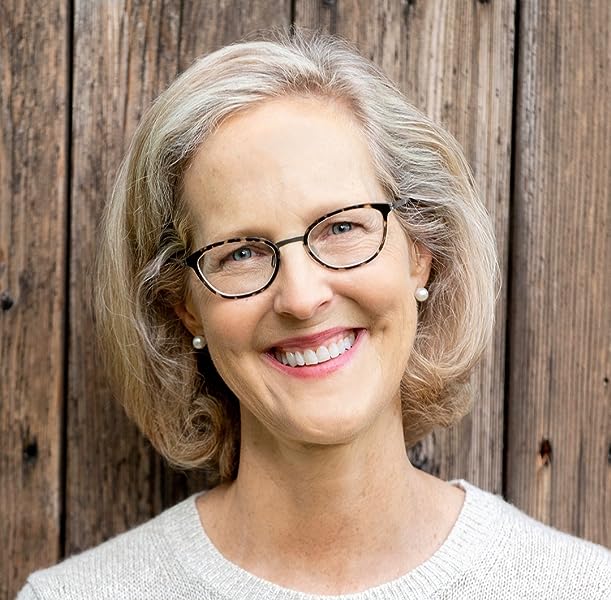
Donna Jackson Nakazawa is an award-winning science journalist and author of eight books exploring the connections between emotions, trauma, and health, offering you new pathways to healing. Her book, Girls on the Brink: Helping Our Daughters Thrive in an Era of Increased Anxiety, Depression, and Social Media, was named a best book of 2022 by The Washington Post. Donna’s other books include The Angel and the Assassin: The Tiny Brain Cell That Changed the Course of Medicine, named a best book of 2020 by Wired, and the bestselling Childhood Disrupted, a finalist for the Books for a Better Life Award. Her books are in 15 languages.
Her newest book, The Adverse Childhood Experiences Guided Journal (foreword by Nedra Glover Tawwab), offers targeted writing techniques to help readers recognize the effects of childhood adversity and reset their brain's internal stories for neurobiological resilience, and is based on Donna’s popular narrative writing-to-heal program, Your Healing Narrative.
Her writing has appeared in Wired, The Boston Globe, Stat, The Washington Post, and Psychotherapy Networker. She has appeared on The Today Show and NPR and is a regular speaker at events, including the Child Mind Institute, Harvard Science, UCLA Health, Rutgers, Johns Hopkins, Children’s Hospitals, and the Andrew Weil Center for Integrative Medicine.
Related products with free delivery on eligible orders
Customer reviews
Customer Reviews, including Product Star Ratings help customers to learn more about the product and decide whether it is the right product for them.
To calculate the overall star rating and percentage breakdown by star, we don’t use a simple average. Instead, our system considers things like how recent a review is and if the reviewer bought the item on Amazon. It also analyzed reviews to verify trustworthiness.
Learn more how customers reviews work on AmazonCustomers say
Customers find the book highly informative, enlightening, and worthy of reading. They also say it offers hope and healing to those with ill health struggling to understand their problem and workable solutions. Readers also say the book is written with enough clarity for the average layman to get a good understanding.
AI-generated from the text of customer reviews
Customers find the book highly informative, enlightening, and worth reading. They say the science is virtually incontrovertible, and the research is extensive. Additionally, readers say the book explains difficult medical concepts in language that is clear for them. They also say the quality of their life has greatly improved, and that the author is the best and brightest of science journalists.
"...problems from childhood abuse, I found this book to be highly informative, enlightening, and worthy of high marks...." Read more
"I bought this book for a book study credit. It was an eye-opening read. The lifelong effects of trauma are shocking." Read more
"...The science is virtually incontrovertible, and the research is extensive...." Read more
"Great find. I have been trying to fix myself all my life. This tells you science based facts and how to heal your brain." Read more
Customers find the book very readable and understandable. They also say the writing is compassionate and easy to understand.
"...It is very well written and researched. I highly recommend it." Read more
"This is a very readable and understandable book about the effects of childhood trauma, abuse and neglect on children and how it can affect a person..." Read more
"...up the book and read them again and I'm finding that the words are slowly sinking in...." Read more
"...Childhood Disrupted is well-written and very well-referenced...." Read more
Reviews with images
-
Top reviews
Top reviews from the United States
There was a problem filtering reviews right now. Please try again later.
Nakazawa argues persuasively that people with high ACE (Adverse Childhood Experiences) scores are at much greater risk of certain kinds of physical illnesses – especially autoimmune disorders – than are people whose ACE scores are low. She also points out that many doctors and other medical professionals are oblivious to the fact that many of the physical health issues they encounter in their patients are, in fact, caused by severe stresses as a consequence of childhood traumas. The medical professions seem to be woefully unaware of the powerful psychosomatic (mind-body) impacts that can result from psychological stressors. Therefore, many patients with severe autoimmune disorders are routinely misdiagnosed by doctors who lack sufficient awareness that a patient’s childhood experiences can gravely impact adult health issues.
As a nonprofessional, it appears to me that, in general, much of Western medical science is due for a makeover, if not a downright revolution. In Western science, there is a serious deficiency in an understanding of the powers of the human mind. By and large, the mind is regarded as NON-EXISTENT – a merely mysterious by-product of physical brain functions. Since the brain is physical, and given the philosophical supposition that the mind consists of brain processes, the powers of the mind are absurdly underrated, marginalized, and often discounted as, in analytical fact, NON-EXISTENT.
Notwithstanding Western sciences’ brilliant successes in “mastering” material entities, its stubborn refusal to acknowledge the viability and powers of the mind simply means that, in certain respects, Western science and philosophy have foundered at the point where Democritus (with his “atoms and the void”) left them in ancient Greece (some 24 centuries ago). My point is not to argue that, regarding matter and the material world, science has not progressed, because it obviously has been brilliantly advanced. However, from the perspective of the mind-body problem, science and philosophy are largely stuck – regardless of how much some neuroscientists might believe that we’re on the verge of a breakthrough, whereby the “consciousness problem” is scientifically solved. The fact is that Western science will have to undergo a revolution (greater than the Copernican revolution) if it will ever make meaningful inroads into the glories of the mind.
My digression into philosophy and science is intimately related to this book review. Nakazawa repeatedly decries the grave inadequacies in our medical professions regarding the crying need to grant due importance to how the mind, when it suffers dysfunctions, can DESTROY the body. To underrate that importance is a seriously damaging error of which most Westernized medical science is guilty. Donna Nakazawa’s book shines the spotlight on medical science’s neglect.
Although my personal interest in this book was principally a desire to learn how better to tackle my psychological problems from childhood abuse, I found this book to be highly informative, enlightening, and worthy of high marks. After all, the book shines a light where much of Western medical science fears to tread.
Through scientific research, Nakazawa demonstrates how our genes are changed based on our childhood trauma, known as epigenetic imprinting and methylation. The result is an inflammation of the organs through cortisol and cytokines, leading to inevitable illnesses in our adulthood. The science is virtually incontrovertible, and the research is extensive. Each chapter illustrates this process with real life stories that grip the heart yet give hope. If you've suffered childhood trauma, then you will certainly identify with the research and stories here. This is a profound and enlightening book. The last three chapters give cutting-edge information on how to begin a pathway towards recovery, from personal to professional approaches. This is one of the best books I have ever read on childhood trauma (see also The Body Keeps the Score by Van Der Kolk). It is very well written and researched. I highly recommend it.
This book opened my eyes. I do not beat myself up anymore. I can breathe. I am free.
I would highly recommend this book to anyone who grew up in a dysfunctional home.

